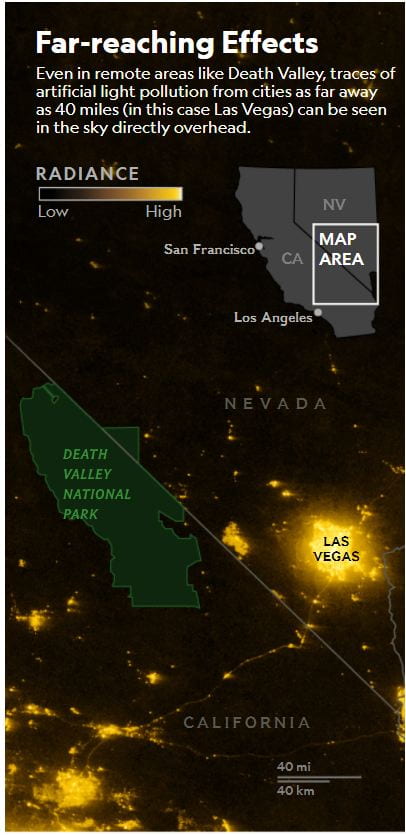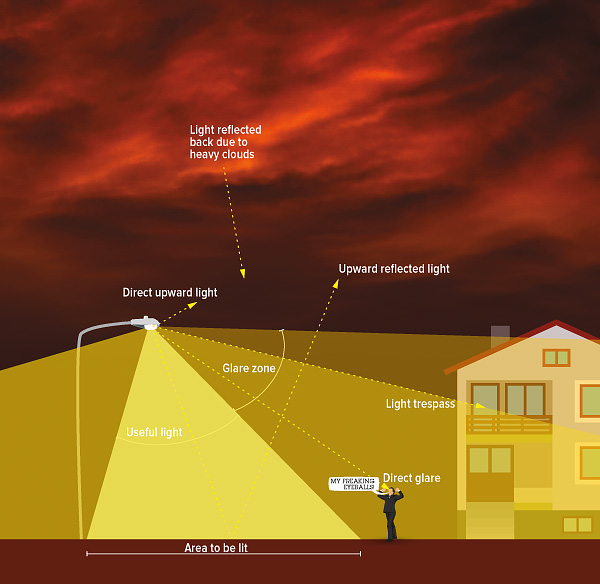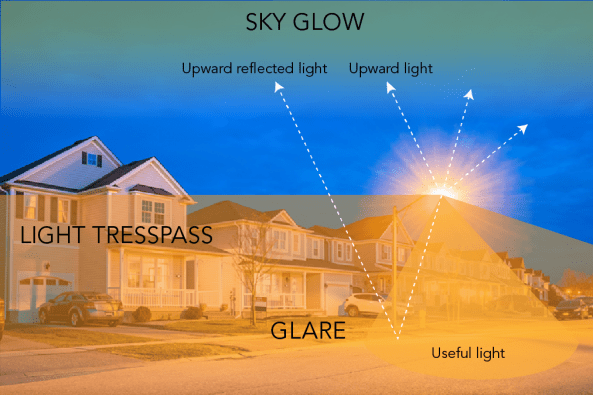Hello all!
After watching Week 9’s lecture on light pollution, I began to wonder if this problem is only present in urban areas, and whether there are any effects and implications on the national parks that are surrounding these areas. All it took was a quick google search, to shed some light on the situation. One of the articles that I came across was about how the Death Valley National Park, which was certified as a Dark Sky Park by the International Dark-Sky Association (IDA) in 2013, still faces issues of light pollution at night, caused by the nocturnal glow of Las Vegas and surrounding cities, despite being located about 65km away.

Far-reaching effects of light pollution. Source: Claire Turell
Let me show you another photograph which perfectly encapsulates this phenomenon.
This is indeed a rather surprising discovery. You’d think that remote places like these would not experience the effects of light pollution from the brightly lit cities located more than a hundred km away! In fact, according to this National Geographic online article, light pollution can travel more than a whopping 217 miles (350km) from its source, thus affecting a rather massive area. Let’s now dive deeper and find out more about light pollution and why its effects are far-reaching.
What is Light Pollution?
According to the definition by IDA, light pollution is the inappropriate or excessive use of artificial light. It is comprised of various components, such as glare, skyglow, light trespass and clutter. The infographic below illustrates the different components that are associated with light pollution.
Glare – Excessive brightness that causes visual discomfort
Skyglow – Upward, directed or reflected light. Brightening of the night sky over inhabited areas
Light Trespass – Light falling where it is not intended or needed
Clutter – Bright, confusing, and excessive groupings of light sources

Different components of light pollution. Source: Anezka Gocova, in “The Night Issue”, Alternatives Journal 39:5 (2013).
Main types of light pollution that can affect National Parks
The two main types of light pollution that can affect remote places like National Parks are skyglow and glare. Skyglow occurs due to the scattering and reflection of light off air molecules and atmospheric aerosols (Turina, 2018). As a result, we observe anthropogenic light originating on the ground as luminance in the sky. Skyglow also diminishes the aesthetics of the night sky and illuminates the observer and the landscape unnaturally. We all know the wondrous feeling of seeing the amazing grandeur of a star-filled night sky, the cosmos, and the starry constellations. Sadly, skyglow has the potential to disrupt this experience.

Suburban neighbourhood showing the location of sky glow, glare and light trespass. Source: Let’s Talk Science
Glare is stray light that strikes our eyes directly from a source. It degrades the visual scene by obscuring visual information. As our eyes automatically adjust to the brightest source of light in a scene, the presence of glares, such as an unshielded lighting fixture, would cause us to have difficulty to see the area surrounding the light. This leads to the loss of visual information in the vicinity of the light (Turina, 2018). Glare also affects our scotopic vision. Scotopic vision refers to the vision of our eyes under low-light levels, aka “Night Vision”. Human vision maintains sensitivity over an impressively large range of ambient light levels. Even though humans maintain visual sensitivity in dark areas, it can take several hours to fully adjust to low light conditions. However, according to the American Optometric Association, dark adaptation can be lost in a matter of seconds upon exposure to bright light.
In the next blog post, we will be discussing more on the importance of night skies and naturally dark environments, as well as the various impacts that light pollution may have on humans and wildlife.
Till next time,
Irsyad
——————
References:
Mace, B. and McDaniel, J., 2013. Visitor Evaluation of Night Sky Interpretation in Bryce Canyon National Park and Cedar Breaks National Monument. Journal of Interpretation Research, 18(1), pp.39-57.
Turina, F., 2018. Protecting Night Skies And Naturally Dark Conditions In National Parks. Madison, Wisconsin: U.S. Forest Service.
